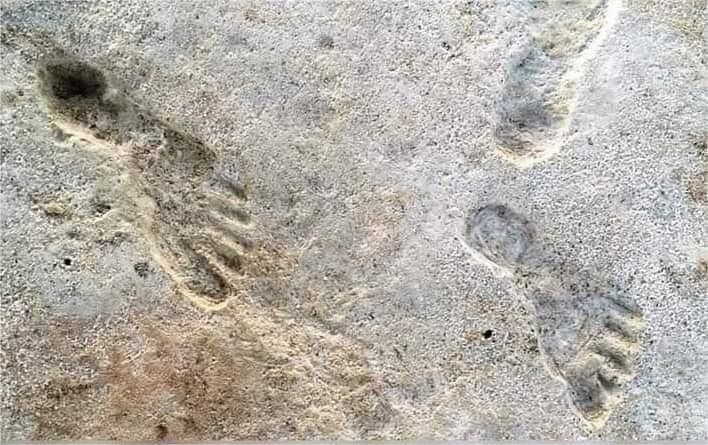The discovery of ancient footprints at White Sands National Park in the United States has provided invaluable insights into prehistoric human activity in the region. These footprints, some dating back more than 23,000 years, offer a fascinating glimpse into the lives of early humans who lived alongside ice age megafauna. This article will analyze these discoveries, the unique environmental conditions that preserved them, and their significance to human history.
1. Ancient Footprints: Evidence from the Ice Age
In 2009, a park ranger at White Sands discovered a set of footprints estimated to be around 10,000 years old. These footprints were believed to belong to a group of people, including both adults and children.
However, the most significant discovery came during subsequent excavations, when even older footprints, dating back over 23,000 years, were uncovered. These footprints are attributed to the Paleo-Indians, who lived during the last ice age, a time when large animals like mammoths, giant ground sloths, and saber-toothed cats roamed the region.
Analysis: Life and Behavior of Early Humans
These ancient footprints provide valuable insights into the behavior and activities of early humans, including:
- Hunting Evidence: Some footprints suggest humans were following the tracks of large animals, possibly engaged in hunting.
- Daily Activities: Footprints of children indicate playful activities, showing the social side of life in prehistoric times.
- Migration and Social Structure: The grouped footprints suggest that these early people traveled together, possibly as families or small tribes.

2. Unique Preservation Conditions
The exceptional preservation of these ancient footprints is due to the park’s distinctive environmental and geological conditions.
Geological Composition
- Fine-Grained Gypsum Sand: This sand was formed from ancient lake deposits and provided an ideal medium for capturing and preserving the footprints.
- Arid Climate: The dry conditions and lack of organic matter helped prevent decomposition, allowing the footprints to remain intact for thousands of years.
Analysis: The Sustainability of the Site
- Importance of Preservation: These footprints are highly fragile and vulnerable to environmental factors such as wind and uncontrolled tourism. The study and preservation of these footprints is a critical task.
- Lessons from Nature: White Sands serves as an example of how geological and climatic factors can work together to preserve historical remnants for millennia.
3. Significance for Human History
The discoveries at White Sands are not just physical marks in the sand, but a window into the cultural and ecological past of early humans.
Understanding Prehistoric Humans
- Resilience: Life during the ice age was harsh, yet these footprints demonstrate the adaptability and survival of early humans.
- Human-Nature Interaction: The footprints reflect a close relationship between early humans and their environment, from hunting to daily activities.
Modern-Day Implications
- Cultural Heritage: White Sands stands as a treasure trove of human history, reminding us of the lives of our ancient ancestors in the most challenging of times.
- Conservation Lessons: Discoveries like those at White Sands highlight the global importance of preserving both natural environments and historical artifacts.

4. The Future of Research and Preservation
Research on the ancient footprints at White Sands is ongoing, utilizing modern technologies like isotopic analysis and 3D scanning. These methods not only help determine precise dates but also offer deeper insights into the diets, health, and specific activities of prehistoric people.
5. Conclusion
The ancient footprints at White Sands are more than just marks in the sand; they are a testament to the connection between humans and nature in the distant past. They tell the story of survival, innovation, and community among early humans, and serve as a reminder of the importance of preserving this extraordinary heritage for future generations.
White Sands National Park, with its natural beauty and historical significance, will forever be a place that holds the untold stories of human history.
